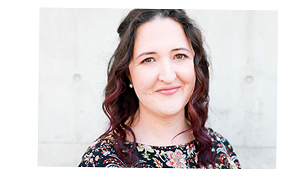Observations from Jen Seyderhelm
I’m off work this week due to finally contracting the coronavirus. Despite not having to get up to my 3:45 am alarm I’m still finding my internal clock wakes me then. I know that I should turn over and try to go back to sleep, but instead I do Wordle.
I’d been ignoring the fad until stats came across my work desk saying Canberrans were the fastest at completing Wordle in the world! Before my on-air colleague Paul Holmes and I discussed the story, me being the frightfully competitive human that I am, thought I’d better see how fast I could do it too.
I’ve not missed a day since.
It gives me a few free minutes of peace, brain stimulation and utter pleasure when those five little green squares pop up.
This game is the most remarkable word(le) of mouth success story of recent times. Welsh software engineer Josh Wardle created it back in 2013 but it wasn’t until during the pandemic, when he and his partner were really savouring crosswords and The New York Times Spelling Bee, that he recreated it in a more straightforward fashion on the web that he and friends could do together. In Nov 2021, 90 people were playing it daily. By January 2022, 2 million were.
The New York Times bought Wordle from Wardle in January 2022 too for an undisclosed sum of millions. Wardle hoped they would keep it free, and the NYT have so far done so. But it’s a lot of money to pay for something that doesn’t even direct me to the NYT website. I savour my daily Wordle because the day I hit a paywall or advertisement I am gone.
I am Gen X. The generation who went from a childhood of limited entertainment options to an unlimited adulthood. The child me planned to buy and keep listening to every single triple j Hottest 100, I was so loyal to the brand and concept. This year, when The Wiggles Like a Version Elephant was No 1, I told my husband to not buy me the CD for my birthday as he has for nearly two decades. As it turns out triple j have discontinued making them anyway.
I fully appreciate that I am not their target demographic. Still, every year, alongside the influence of my children, niece, students and younger work colleagues, I discover new music that I love via that Hottest 100. Mallrat, Genesis Owusu, Hockey Dad, Thelma Plum and yes, Tame Impala to name a few.
This year’s countdown felt wrong. It felt like it was dictated by people who had tapped into this one occasion to vote rather than those who genuinely are listening to triple j on a regular basis and driving new music sounds, styles and voices.
I work for Forever Classic 2CA in Canberra. Our TSL and audience loyalty is wonderfully high. I’d love to think that’s because of the talent at my station but perhaps the target audience and music is a (small!) factor. In the six years I’ve worked at 2CA and sister talk station 2CC, when I speak to people about what they listen to, the most flexible are those tuning into commercial radio. The ABC (non triple j) folk are more rusted on and less likely to consider alternatives.
Which brings me to the millennials.
What are they choosing to listen to? More to the point, what are their radio alternatives?
When I was that age, I only had the options of local stations. I loved discovering music that I knew my mother would hate and was totally captivated by the scandalous skits and behaviour of Doug Mulray. All of it was a new experience for me and I’ve never forgotten what 90s radio taught me and made me feel.
When I first heard the whispers about The Edge changing to target a young audience I was elated. Firstly, because competition would hopefully lead triple j to pull their fingers out and take a good look at their clarity of brand and secondly because if we can’t attract youth to come on board now, this really will mark a future death of radio.
Millennials are copiously using digital music providers and listening to podcasts of all varieties. They love songs and conversations. While they have literally billions of options to select from, what they’re taking in is all still new to them too. There’s just not a lot of places where the two come together, speaking their language.
Hello CADA!
Shorter shows. Social media stars. Six-minute-long talk breaks. Diverse voices. Young Australian R&B and hip-hop music.
Everything about CADA is way cooler than I’ll ever be. It’s not my style and obviously not aimed at this mid 40’s mama but I’m willing it to be successful because long term it’s a win for radio and new ways of formatting.
ARN have a truckload of money invested. Like the New York Times’ purchase of Wordle, they’ll eventually need a return on that investment. How that will be measured remains to be seen.
I do believe that Australian youth will commit to CADA if they feel that the station is genuinely listening to them, serving their needs and providing them with ideas and sounds they haven’t experienced before.
It’s about bloody time that our industry provided them with a local option. Kudos CADA and best wishes.


